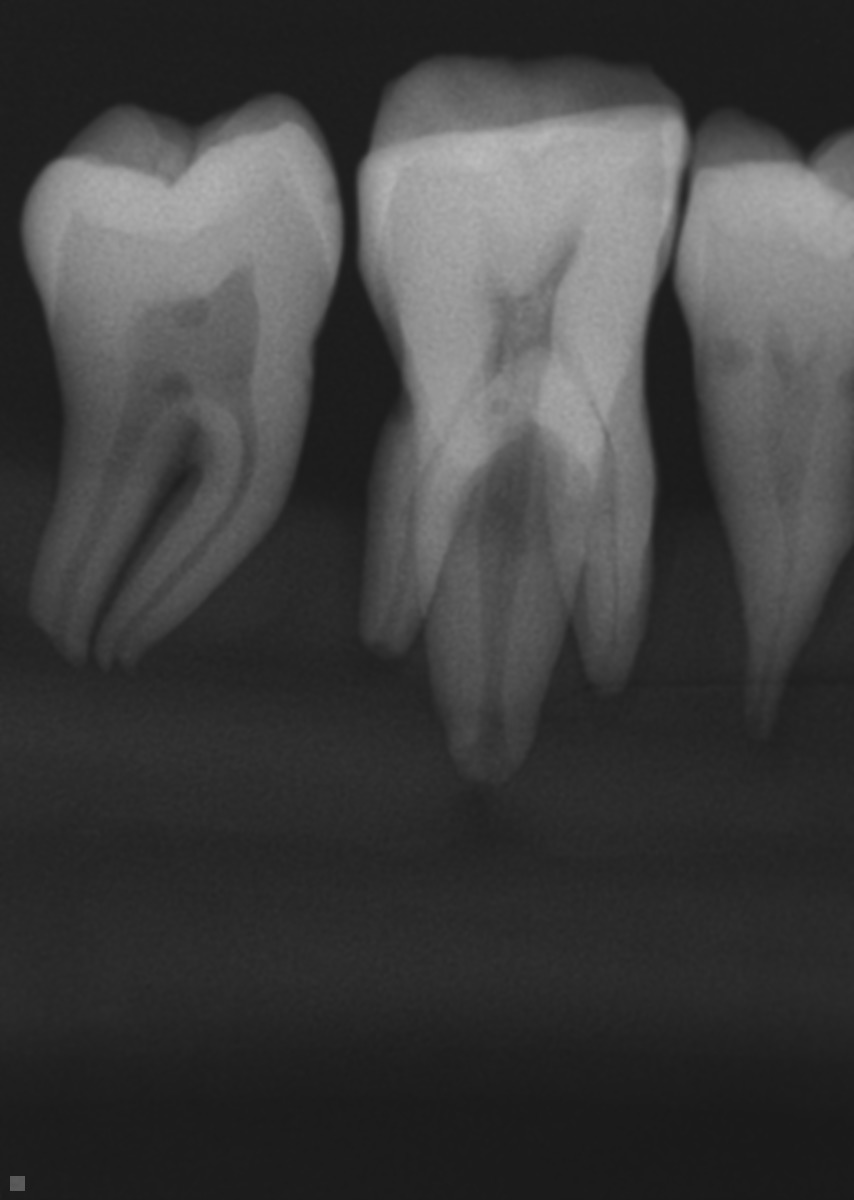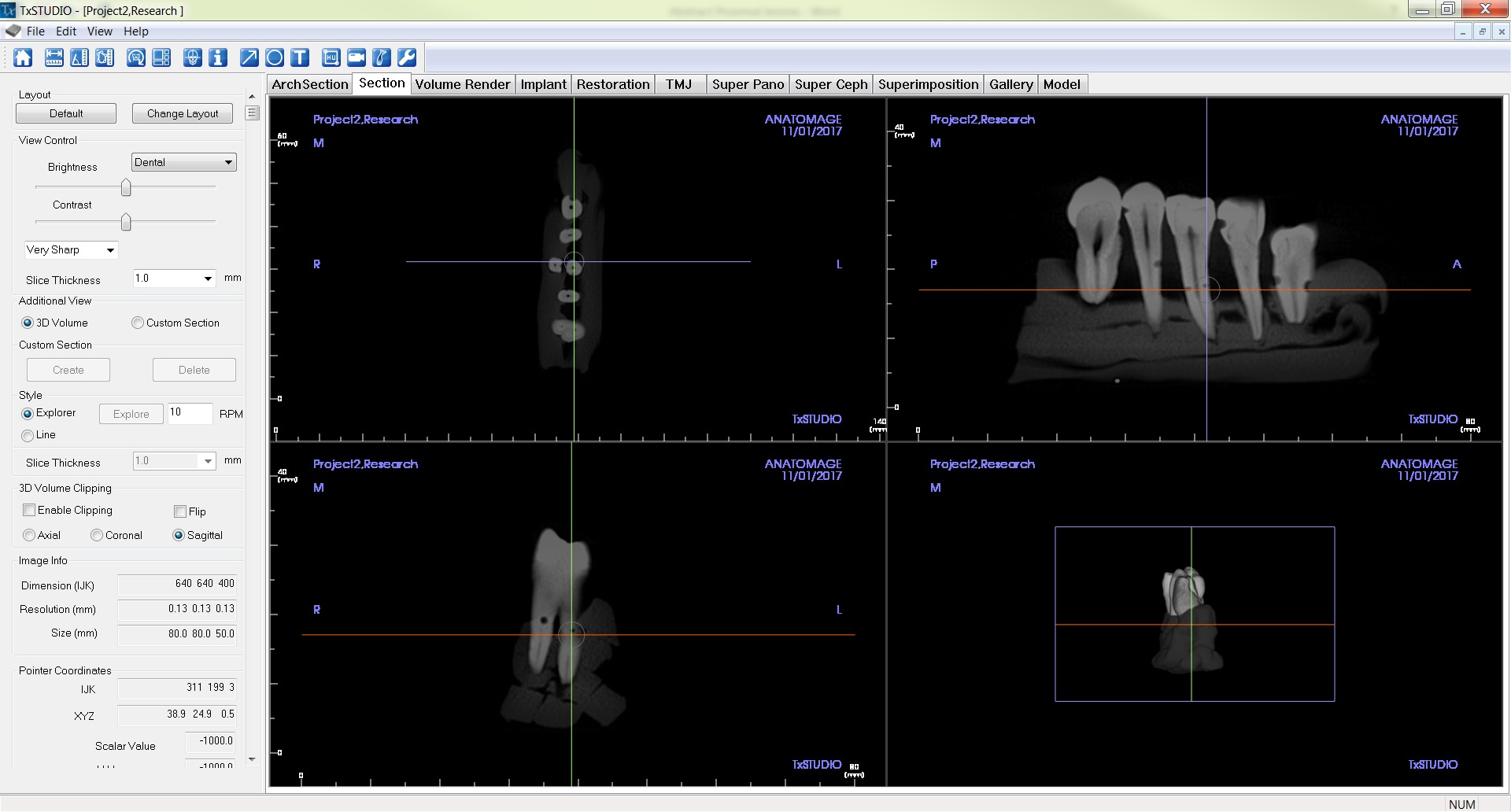IADR Abstract Archives
CBCT With Different Voxel Sizes Versus Digital Periapical Radiography in Detection of External Resorption
Objectives: To compare the efficacy of cone beam computed tomography (CBCT) images acquired with 2 different voxel sizes, and digital periapical radiographs in diagnosing external resorption lesions.
Methods: This study included 280 root surfaces from a sample of 46 extracted permanent teeth. Surfaces were randomly divided into two groups; Group A: Experimental group (N=138) and Group B: control (N = 142). Group A was further divided to 9 subgroups according to the size of the lesion created: A1 , A2, and A3, and according to the location of the lesion; apical (A), middle (M) or cervical (C) thirds. Group A cavitated lesions were simulated by drilling holes on the root surfaces with a size ¼, 2 and 4 round bur for subgroups A1, A2 and A3 respectively. The teeth were mounted in sticky wax and a rubber glove filled with water was used to simulate soft tissues. All teeth were radiographed under standardized conditions; Direct digital images were obtained using a Schick Elite direct digital intraoral CCD sensor to obtain periapical radiographs. I-CAT 17-19 model scanner was used to obtain the CBCT scans with a field of view 8 X 5 cm, the scans were obtained with 2 voxel sizes; 0.125 and 0.3.
Results: CBCT with 0.125 voxel size showed statistically significantly higher number of correctly diagnosed lesions than both CBCT with 0.3 voxel size and Periapical radiographs. Periapical radiography was significantly less accurate than CBCT scans with both voxel sizes. Comparison between the different groups shows a higher percentage of correctly diagnosed A3 lesions (94.79%) compared to 87.04% A2 lesions, and 64.07 % A1 lesions. The percentage of missed lesions on Buccal/lingual surfaces was 14.29% compared to only 3.29 % on proximal surfaces. The Chi Square test suggests no difference between observers (p-value=0.93)
Conclusions: CBCT scans are more accurate in diagnosing external root resorption compared to Periapical radiographs. A smaller voxel size is preferred and yields a more accurate diagnosis . Buccal and lingual root resorption is more challenging to diagnose compared to proximal resorption lesions.
Methods: This study included 280 root surfaces from a sample of 46 extracted permanent teeth. Surfaces were randomly divided into two groups; Group A: Experimental group (N=138) and Group B: control (N = 142). Group A was further divided to 9 subgroups according to the size of the lesion created: A1 , A2, and A3, and according to the location of the lesion; apical (A), middle (M) or cervical (C) thirds. Group A cavitated lesions were simulated by drilling holes on the root surfaces with a size ¼, 2 and 4 round bur for subgroups A1, A2 and A3 respectively. The teeth were mounted in sticky wax and a rubber glove filled with water was used to simulate soft tissues. All teeth were radiographed under standardized conditions; Direct digital images were obtained using a Schick Elite direct digital intraoral CCD sensor to obtain periapical radiographs. I-CAT 17-19 model scanner was used to obtain the CBCT scans with a field of view 8 X 5 cm, the scans were obtained with 2 voxel sizes; 0.125 and 0.3.
Results: CBCT with 0.125 voxel size showed statistically significantly higher number of correctly diagnosed lesions than both CBCT with 0.3 voxel size and Periapical radiographs. Periapical radiography was significantly less accurate than CBCT scans with both voxel sizes. Comparison between the different groups shows a higher percentage of correctly diagnosed A3 lesions (94.79%) compared to 87.04% A2 lesions, and 64.07 % A1 lesions. The percentage of missed lesions on Buccal/lingual surfaces was 14.29% compared to only 3.29 % on proximal surfaces. The Chi Square test suggests no difference between observers (p-value=0.93)
Conclusions: CBCT scans are more accurate in diagnosing external root resorption compared to Periapical radiographs. A smaller voxel size is preferred and yields a more accurate diagnosis . Buccal and lingual root resorption is more challenging to diagnose compared to proximal resorption lesions.


